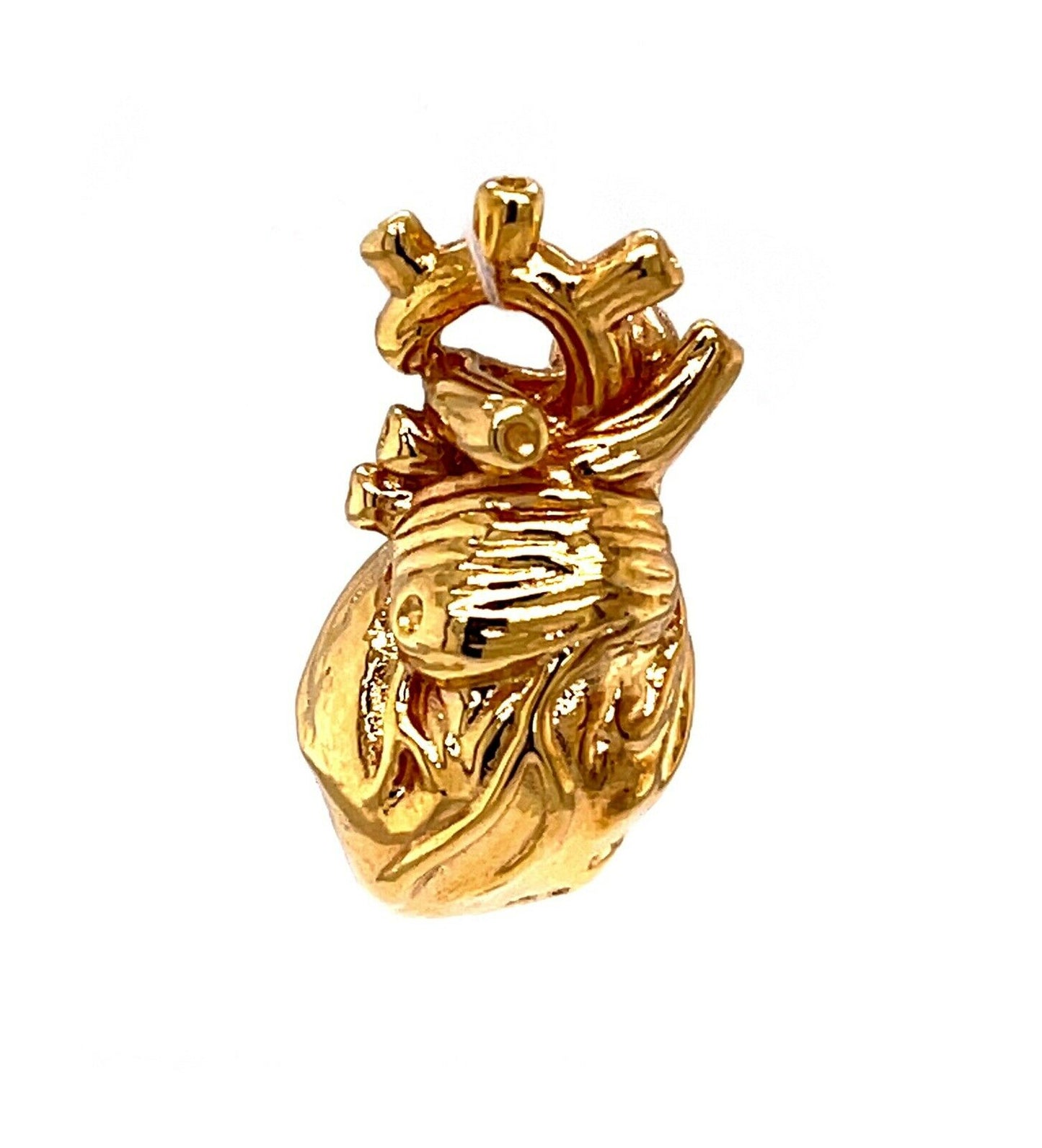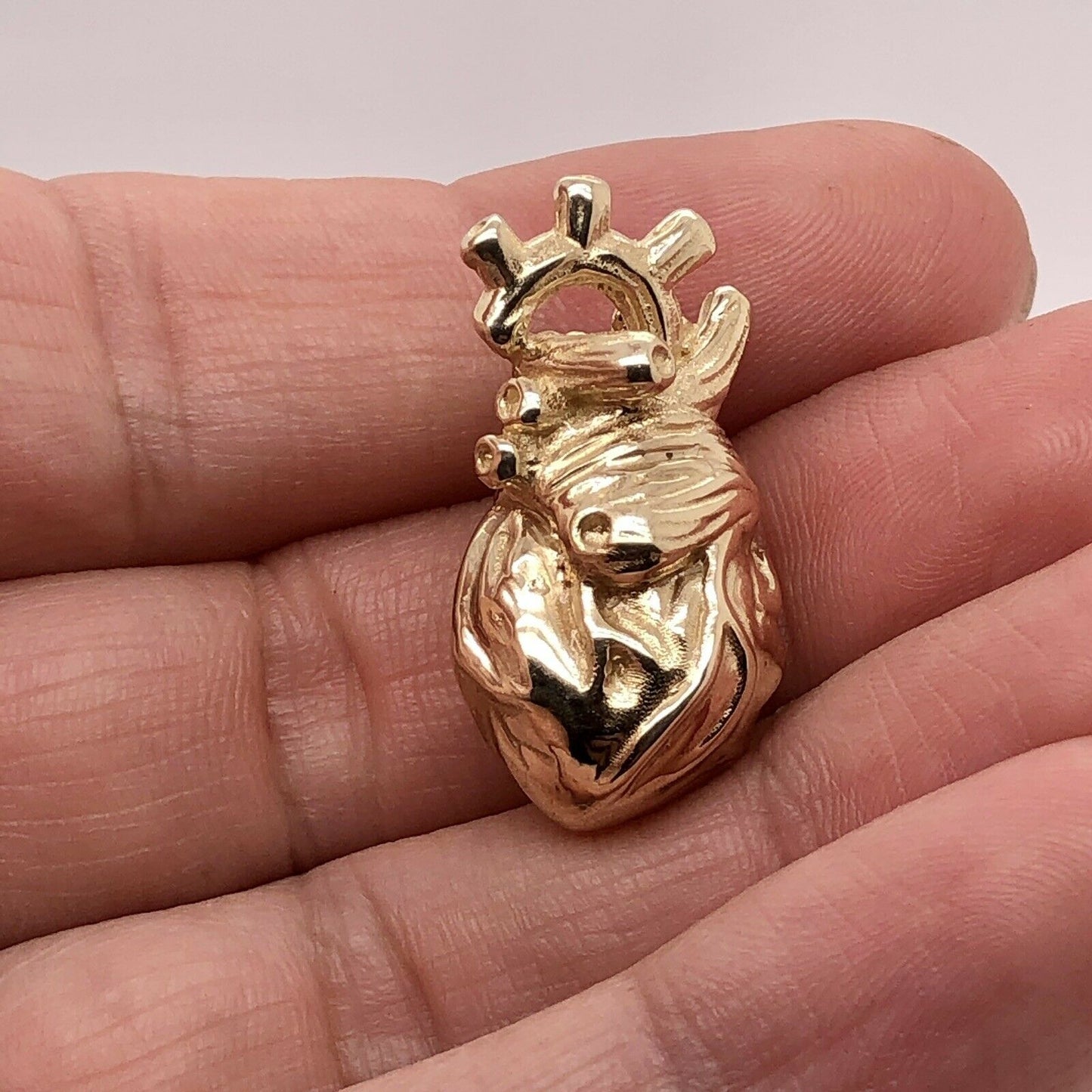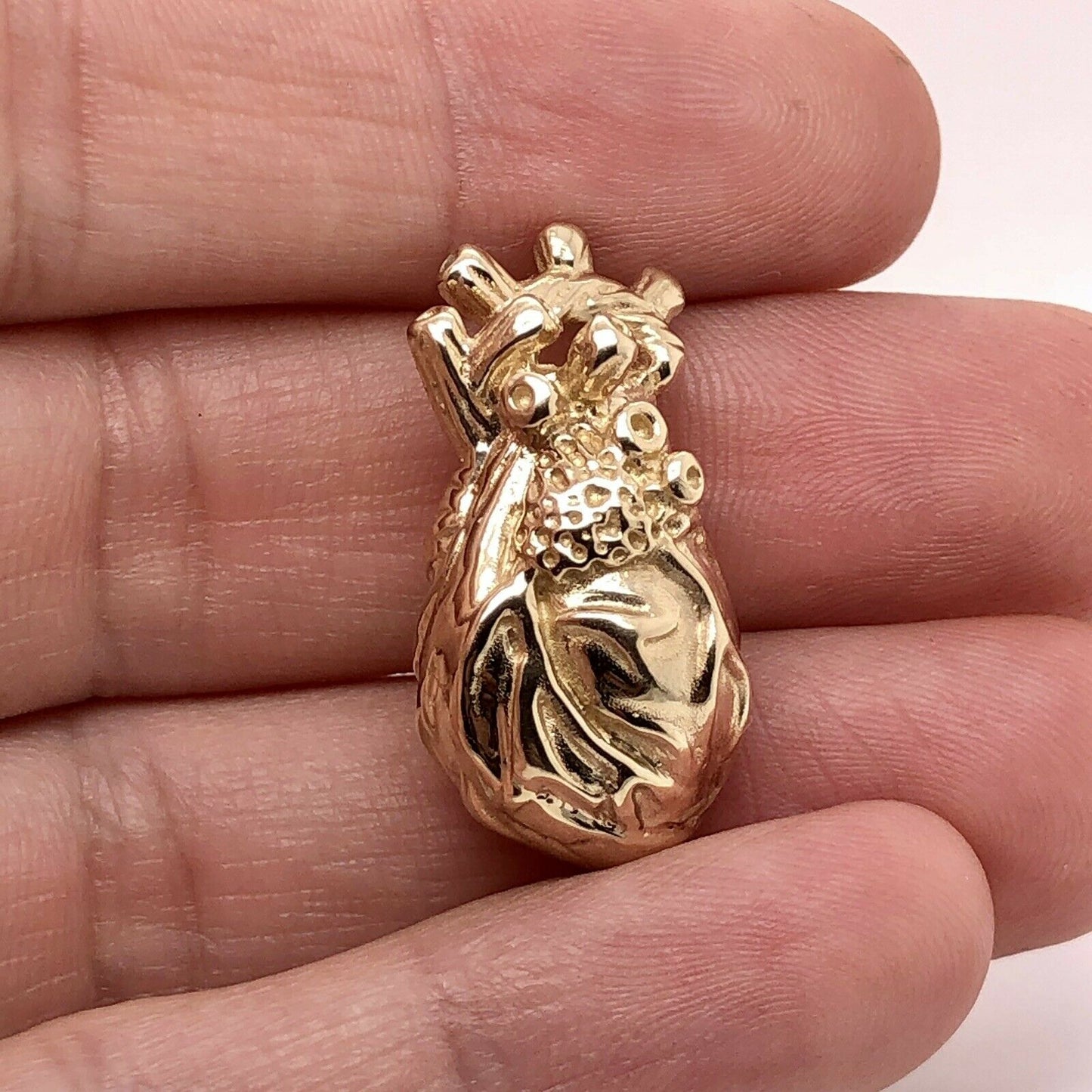My Store
14k Gold Anatomical Human Heart 3D Model Anatomy Medical Pendant Custom Made
14k Gold Anatomical Human Heart 3D Model Anatomy Medical Pendant Custom Made
Couldn't load pickup availability
New without tags
Very beautiful and unique Custom made 14k real yellow gold anatomical 3D model human heart pendant. A great gift for doctors, surgeons, nurses and medical staff and students!Weight : 16.5 grams Length : 30.38 mm(1.20 inches)Widest point: 16.12 mm (0.63 inches) Please review the description, item condition and pictures carefully before shopping, Thank you! The History of the Heart Shape Surely Valentines day is coming forward you might be interested in the history of the heart shape, If not you might be giving this gift to medical staff, nurses, surgeons or your soulmate! you can purchase a beautiful gold anatomical human heart medical pendant custom made from our site. Lets get to the point Widely recognized as a symbol of love and affection, the shape of the heart has evolved over the centuries. These heart shapes are so constant in modern life that it may be hard to believe that double ideographs with V-shaped bases have never existed. One of the most used emojis is the heart. How did this ubiquitous symbol, appearing in everything from text messages to works of art, come about? Its evolution is unknown, but there are several theories. The heart shape was used in the decorative arts of ancient societies. One of the oldest examples is an Indus Valley civilization pendant embossed with a heart-shaped fig leaf. Ivy, fig, and water lily leaves were all used in art and heraldry. Ivy is often used as a symbol of fidelity. Botanical symbolism may have contributed to the later modern heart-shaped meaning. Some believe that the heart shape is a stylized representation of the human anatomy, depicting the curved shape of the chest, buttocks, or genitalia. Others believe that the heart is the seat of the soul. It is believed to have been inspired by ancient philosophers and physicians such as Galen, the father of 2nd-century medicine, who believed it to be the heart and emotional center. Like the pine cones described. Over time, the heart shape became popular in decorative arts and heraldry, but it was not until the 13th century that it acquired a strong association with love. The medieval concept of courtly love led to many illustrations glorifying romance, often using the heart shape as a symbol of love. The first known depiction of the heart shape as a symbol of love comes from the 1250 French manuscript Roman de la poire, in which a young man presents a vague, pinecone-shaped heart to his lover. . Until the 14th century, hearts were usually drawn upside down. This changed in his 15th century, when the heart symbol became similar to that used today, making it a suit of playing cards. Did Valentines day have any impact on it? The growth of Valentine’s Day, established in 496 to honor the martyred saint who aided lovers and performed secret marriages, helped promote the heart-shape even further. Valentine’s Day gained popularity in the seventeenth century, when it involved simple love notes, often adorned with hearts. The Victorian obsession with elaborate greeting cards made Valentine’s Day into a heart-bedecked extravaganza, a custom continued by modern greeting card companies today. How did the Heart Become the Symbol of Love anyway? The oldest heart-shaped symbol may actually have represented the seed pods of the Silphium plant, which was used as a contraceptive in ancient Libya. It could also simply represent the shape of someone's buttocks or a woman's vulva. Its ancient origins are varied and largely left to historical speculation.
Share















